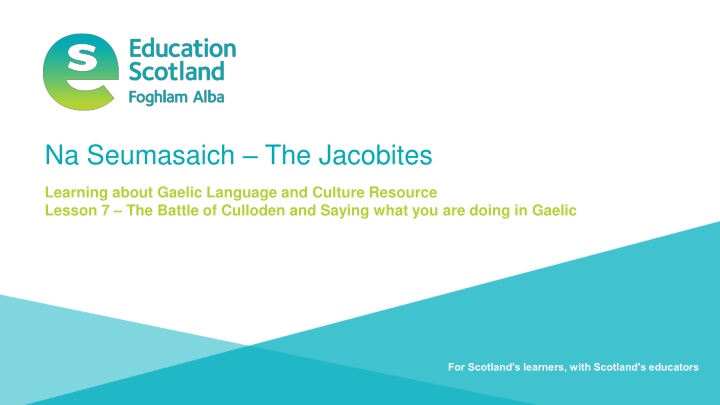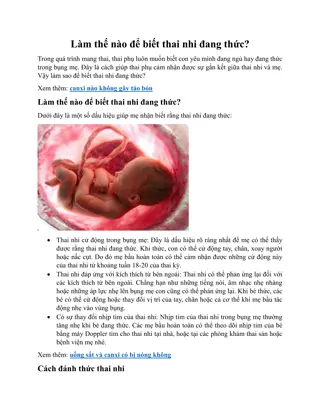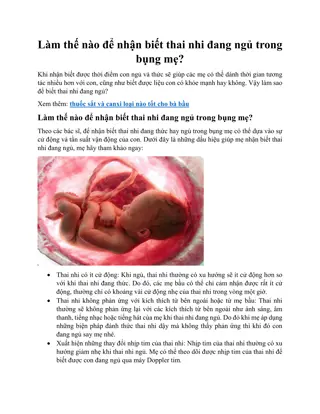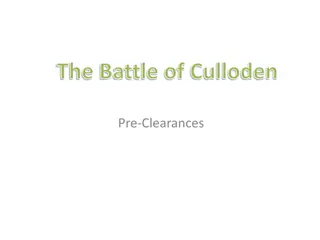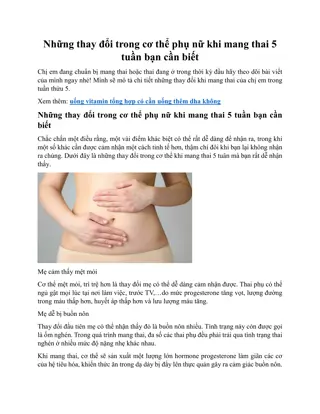Na Seumasaich–The Jacobites
Explore the Battle of Culloden, Duke of Cumberland's life, aftermath, days of the week in Gaelic, expressing actions in Gaelic, and crafting short texts in Gaelic. Delve into the Jacobites' march, setbacks, and emotions during the historic events.
Download Presentation

Please find below an Image/Link to download the presentation.
The content on the website is provided AS IS for your information and personal use only. It may not be sold, licensed, or shared on other websites without obtaining consent from the author.If you encounter any issues during the download, it is possible that the publisher has removed the file from their server.
You are allowed to download the files provided on this website for personal or commercial use, subject to the condition that they are used lawfully. All files are the property of their respective owners.
The content on the website is provided AS IS for your information and personal use only. It may not be sold, licensed, or shared on other websites without obtaining consent from the author.
E N D
Presentation Transcript
Na Seumasaich The Jacobites Learning about Gaelic Language and Culture Resource Lesson 7 The Battle of Culloden and Saying what you are doing in Gaelic For Scotland's learners, with Scotland's educators
Na Seumasaich Lesson 7 In this Learning about Gaelic Language and Culture resource lesson we will learn: about the Battle of Culloden about the life of the Duke of Cumberland about the initial aftermath of the Battle of Culloden the days of the week in Gaelic to say what you are doing in Gaelic to create short texts about ourselves and others in Gaelic
Miri and Calum F ilte air ais a Chaluim Welcome back. Tapadh leat a Mh iri C it a bheil thu a fuireach? Tha mi a fuireach ann an Loch Abar
So the Prince is doing really well, surely he ll win! The Jacobites were able to march deep into England, but the further south they got the less support the attracted. Why was that? Did the English not like him? Actually, there were lots of Jacobites in England. However, not many joined the cause. And when they reached Derby they turned back. I see. They would not have been happy. They got so close but so far!
Carson a thill na Seumasaich? Why did the Jacobites return? - 1 After the Jacobites left Scotland, the British Government retook Edinburgh and tried to catch the Jacobites. Instead of going the traditional invasion route of Berwick Upon Tweed, the Jacobites took a route via Carlisle in Cumbria where many Jacobite supporters lived. Berwick Upon Tweed They reached Preston and Manchester but even though they attracted a large crowd and Preston was strongly Jacobite only three men joined the Prince s army. Carlisle Manchester Preston By now many of the Highlanders were homesick and wanted to go home. There is a Gaelic word cianalas which means a longing for home. However, the Prince convinced them to continue and that they would get reinforcements in Derby. Derby London/Lunnainn
Carson a thill na Seumasaich? Why did the Jacobites return? 1 - Questions 1. Why did the Jacobites go via Cumbria? 2. What happened in Preston that would have discouraged the Jacobites? Berwick Upon Tweed 3. How were many of the Highlanders feeling? Carlisle Manchester 4. How is the word cianalas explained? Preston Derby London/Lunnainn
Carson a thill na Seumasaich? Why did the Jacobites return? - 2 When the Prince and his army reached Derby, he had to admit that he did not have contact with English Jacobites. His Scottish allies were upset with him and they voted to return to Scotland. Culloden Whilst the British Government was making preparations to evacuate the King from London, the Jacobites may have struggled to take the British Capital. Although they could march quickly, this was because they did not have many heavy guns and would have made holding London difficult. Falkirk Clifton This movement would mean that they managed to outrun the British forces as they retreated. However, slowly but surely the Jacobites would be dragged into battles which did not suit their style of warfare. Although they won at places such as Clifton Moor and Falkirk Muir, they would meet a bloody end at Culloden. Derby
Carson a thill na Seumasaich? Why did the Jacobites return? 2 - Questions 1. Why did the Jacobites vote to go home? Culloden 2. What were the British Government preparing to do? Falkirk 3. Why might it have been difficult for the Jacobites to take London? Clifton 4. Which two battles did the Jacobites win as they retreated to Scotland? Derby
A bloody end at Culloden? That doesn t sound good. It wasn t. The Battle of Culloden was the major event in Highland history. Thousands died on the day, and in the months that followed. Why was the defeat so bad? Culloden was very unsuited for the Jacobites style of fighting. However, the British forces were also determined that Culloden would be the end of any future Highland rebellions. I m not sure if I m ready for this bit!
The Battle of Culloden - 1 On 16 April 1746 September, the last pitched battle on British soil took place at Culloden Moor (C il Lodair) to the east of Inverness. The Jacobites were exhausted after attempting a late night march to surprise the Government troops which failed. In fact, many missed the battle because they were not fit. Only 5000 Jacobites faced 7000-9000 well-rested and well-equipped redcoats. Culloden Moor was not a suitable place for the Jacobites to fight either. It was flat, boggy and they started too far away from the British lines. The famous Highland charge was not effective. The British guns and then rifles inflicted heavy losses, and many of the Jacobites fled for their lives.
The Battle of Culloden 1 Questions 1. What was the date of the Battle of Culloden? 2. Why were the Jacobites unprepared for the battle? 3. Why was Culloden not a suitable place for the Jacobites to fight well?
The Battle of Culloden - 2 Some of the Prince s more professional troops from Scotland, Ireland and France retreated more orderly giving him and his party the chance to escape. However, the British were able to catch up with many of the Highlanders who tried to escape and shot or cut them down. There are also reports that the redcoats killed many of the wounded Jacobites on the battlefield afterwards with bayonets. Losses were estimated at 1200-1500 dead and 500 prisoners. The British only lost 50 men in comparison. Whilst the British were executing Jacobite prisoners in the Old High Churchyard in Inverness, the remaining Jacobites headed towards Ruthven Barracks in Badenoch to await further orders. The Prince fled for safety in the West. CC BY-SA 3.0 - Hoodinski
The Battle of Culloden 2 Questions 1. What allowed Bonnie Prince Charlie to escape? 2. What did the redcoats do to a) enemy soldiers they caught b) wounded soldiers on the battlefield? 3. What shows that the Jacobites lost a lot more soldiers than the Government? 4. What happened in the graveyard of the Old High Church in Inverness? CC BY-SA 3.0 - Hoodinski
Duke of Cumberland Prince William Augustus was the third and youngest son of King George II. Even before he was an adult he was connected to the Highlands. When the British established a network of forts in the Highlands after 1715 to squash any future rebellions, Cille Chuimein or Kilchuimein at the south end of Loch Ness was renamed Fort Augustus. He was considered a very effective military leader and was chosen to put an end to the Jacobite rebellion especially after the failures of John Cope and others. He trained his soldiers hard and was well prepared for any battle. After Culloden, he told his soldiers to give no quarter to the Jacobites. This meant not to show even the wounded any mercy. He then sent his troops out to pacify the Highlands. Suspected Jacobites were executed on the spot, Cathoic and Episcoal churches were destroyed and property was confiscated. Although he was hated by the Jacobites and many other Highlanders, who called him Butcher Cumberland , he had many supporters who called him Sweet William . However today he is mostly remembered as The Butcher . He died age 44.
Duke of Cumberland - Questions 1. What relation was the Duke of Cumberland to the King? 2. What was the original name of Fort Augustus? 3. What kind of reputation did he have? 4. What orders did the Duke give his troops after Culloden? 5. What two nicknames did the Duke receive?
Ruthven Barracks - 1 What happened after Culloden? Mach seo?* The Prince fled to Gorthleck, then to Invergarry Castle, but his troops gathered at Ruthven Barracks, near Kingussie. *Mach seo? Out of here! Said when needing yourself or someone else to leave quickly
Ruthven Barracks - 2 Ruthven Barracks is on a hilltop beside the River Spey. It had been an important military site controlling the river crossing since at least the 13th century, when first the Comyns, then Alexander Stewart (a distant ancestor of the Stuarts) also called The Wolf of Badenoch had his base there. The Ruthven Barracks were built in 1721 and could accommodate 120 troops and 28 horses. It held out to 200 Jacobites in 1745 but eventually fell to a larger Jacobite force. Mach seo The day after Culloden, 3000 Jacobites retreated to Ruthven to await new orders from the Prince. However, the Prince told them by letter Let every man seek his own safety in the best way he can. This brought the end of the Jacobite rebellions to a final end in the Gaelic heartland of Badenoch. The Jacobites then set the buildings of fire to stop the British using them. It has remained ruined ever since, and is now a historic monument which is seen from the A9 road near Kingussie. Tha mi a dol dhachaigh
Ruthven Barracks - Questions 1. What was Alexander Stewart s nickname? 2. How big a force could stay at Ruthven? Mach seo 3. What was Bonnie Prince Charlie s final order to the Jacobite Troops? 4. Why did the Jacobites burn down the barracks? 5. Where can you see the ruins of Ruthven from? Tha mi a dol dhachaigh
How to talk about what you are doing in Gaelic D tha sibh a d anamh? You already know how to say I stay or I am staying in Gaelic, Tha mi a fuireach you use the same structure for saying you are doing other things. Tha mi a cluich I am playing Tha mi a seinn I am singing Tha mi ag ithe I am eating Tha mi ag l I am drinking To ask someone what they are doing - D tha thu a d anamh? Or if they are older or there is more than one D tha sibh a d anamh? Tha mi a cluich Tha mi a seinn Tha mi ag ithe Tha mi ag l
Days of the Week D latha a th ann? What day is it? Diluain - Monday Dim irt - Tuesday Diciadain - Wednesday Diardaoin - Thursday Dihaoine - Friday Disathairne - Saturday Did mhnaich - Sunday L na S baid Sunday (Sabbath) There are two words for Sunday in Gaelic. Some people use Did mhnaich and some use L na S baid which also means Sabbath day (the day of rest). you can find out more info at the link below. LearnGaelic - Beginners - Little by Little - Unit 4 - Saying what you ve been doing and what you're going to do
D tha thu a danamh? What are you doing? a cluich ball-coise playing football a dannsadh dancing a sabaid fighting
D tha thu a danamh? What are you doing? - 1 a dol dhan sgoil going to school a dol dhachaigh going home ag iomain / a cluich camanachd playing shinty
D tha thu a danamh? What are you doing? - 2 a coimhead air bhideothan watching videos a teacsadh mo charaid texting my friend a bruidhinn ri caraid talking to a friend
D tha thu a danamh? What are you doing? - 3 ag l drinking ag ithe eating a seinn singing
D tha thu a danamh? What are you doing? - 4 a suidhe sitting ag obair working a ruith running
Task one - writing You are going to create a diary for a week. Examples Diluain, tha mi a dol dhan sgoil Say one thing that you might do each day. Dim irt, tha mi a cluich ball-coise You may want to draw a picture or use images to show the activity. Diciadain, tha mi a bruidhinn ri caraid Diardaoin, tha mi a cluich air an fh n agam If you don t already have the words for what you are doing, use LearnGaelic Dictionary to see if you can find the activity. If not use another thing you would do that day. Dihaoine Disathairne
Task two - Poster Use resources to research the Battle of Culloden as a class Make a large poster to give information on the Battle of Culloden Make it clear, colourful, and informative Try and use as much Gaelic on it as possible
Education Scotland Denholm House Almondvale Business Park Almondvale Way Livingston EH54 6GA T +44 (0)131 244 5000 E enquiries@educationscotland.gsi.gov.uk For Scotland's learners, with Scotland's educators
